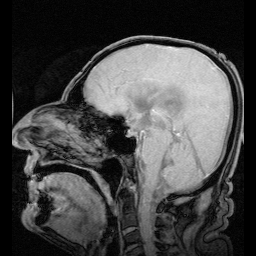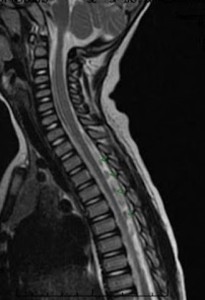Congress:
ECR25
Poster Number:
C-26389
Type:
Poster: EPOS Radiologist (scientific)
DOI:
10.26044/ecr2025/C-26389
Authorblock:
M. Beraia, M. Okujava, S. Kakhadze, N. Eliava, A. Siradze, I. Esvanjia, S. Khokhashvili, A. Khitarishvili, L. Tavkhelidze; Tbilisi/GE
Disclosures:
Merab Beraia:
Nothing to disclose
Michael Okujava:
Nothing to disclose
Sophio Kakhadze:
Nothing to disclose
Nino Eliava:
Nothing to disclose
Aneta Siradze:
Nothing to disclose
Irma Esvanjia:
Nothing to disclose
Salome Khokhashvili:
Nothing to disclose
Ana Khitarishvili:
Nothing to disclose
Levani Tavkhelidze:
Nothing to disclose
Keywords:
Neuroradiology brain, MR, MR-Angiography, MR-Elastography, Physics, Cerebrospinal fluid
The main reason for cerebrospinal fluid (CSF) circulation in the brain is fluid production by the choroid plexuses and ventricle compression by the arterial pulse. However, plexuses do not exist in the spinal cord, whereas liquid turbulence flow in the cervical and thoracic spine exists as in the brain circulatory narrow areas. We study these "contradictions."

Fig 1: © Nevit Dilmen

Fig 2: © Dr Balaji Anvekar
Brain and spine MRI. CSF turbulence.
Globular signal loss in dorsal subarachnoid space resulting from turbulence and time-of-flight effects associated with complex CSF flow.

Flow tends to be turbulent when there is a low-viscosity fluid moving at a high velocity.